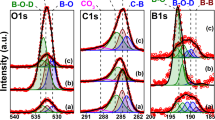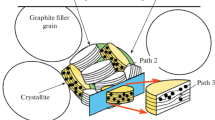Abstract
The amount of tritium in the carbon tiles used as a first wall in the DIII-D tokamak was measured recently when the tiles were removed and cleaned. The measurements were made as part of the task of developing the appropriate safety procedures for processing of the tiles. The surface tritium concentration on the carbon tiles was surveyed and the total tritium released from tiles samples was measured in test bakes. The total tritium in all the carbon tiles at the time the tiles were removed for cleaning is estimated to be 15 mCi and the fraction of tritium retained in the tiles from DIII-D operations has a lower bound of 10%. The tritium was found to be concentrated in a narrow surface layer on the plasma facing side of the tile, was fully released when baked to 1000°C, and was released in the form of tritiated gas (DT) as opposed to tritiated water (DTO) when baked.
Similar content being viewed by others
References
T. C. Simonen, (1992).J. Fusion Energy 11, 79.
R. A. Causey, (1989).J. Nucl. Mater. 162–164, 151.
H. H. Duong and W. W. Heidbrink, (1993).Nucl. Fusion 33, 211.
D. N. Hillet al. (1990).Proceedings of the 13 International Conference on Plasma Physics and Controlled Nuclear Fusion, Vol. III (Washington, D.C.), p. 487.
J. P. Coadet al. (1989).J. Nucl. Mater. 162–164, 533.




